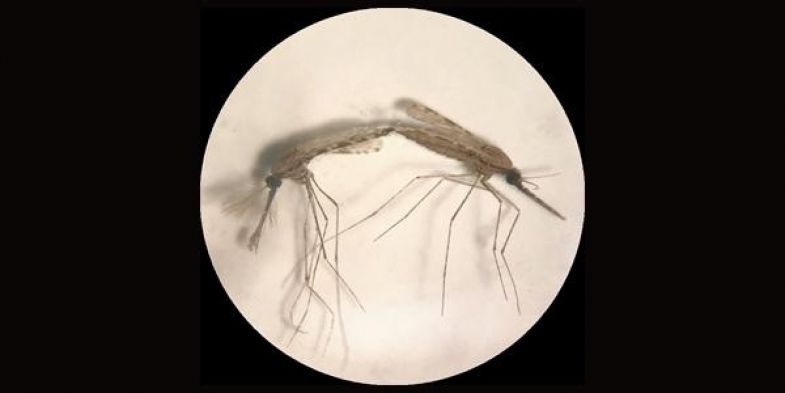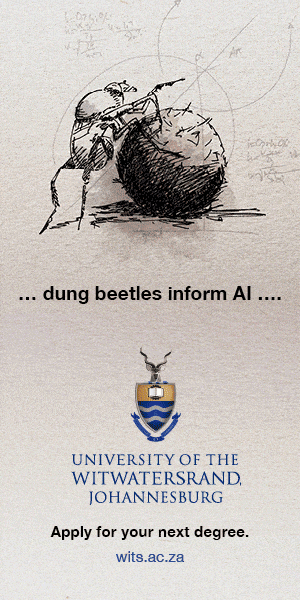And the mating mozzies story: For the first time, scientists have identified male mosquito-specific pheromones that influence mating rituals.
Scientists at the Wits Research Institute for Malaria (WRIM), Stockholm University (Sweden), the Institute of Ecology, Nature Research Centre (Lithuania), and the Eijkman Institute for Molecular Biology (Indonesia) published the study in Nature Ecology & Evolution on 3 August 2020.
The findings have implications for controlling mosquito reproduction and thus decreasing malaria, which these vectors cause.
Worldwide, malaria affects over 228 million people annually causing over 400 000 deaths predominantly in Africa and mainly in children under 5-years-old and pregnant women.
 Male Anopheles mosquito mating with female - Credit: Melika Hajkazemian, Emami Lab
Male Anopheles mosquito mating with female - Credit: Melika Hajkazemian, Emami Lab
Dancing male mosquitoes
Although female mosquitoes are responsible for the transmission of the parasites that cause malaria in humans (and therefore usually the focus of most research), males are equally responsible for the proliferation of mosquito populations.
“A female mosquito mates only once in her lifetime. This mating takes place with the males in a mating swarm. These dancing male mosquitoes gather in large mating swarms during dusk and dawn,” says Jacek W. Zawada, co-author of the study and PhD candidate in the WRIM. “But we know very little about what stimulates swarm formation.”
The study found that males release aggregation [cluster] pheromones [odours] that attract individual females to the swarms and increase their mating success during this dusk/dawn cycle.
 Jacek Zawada in the Wits Research Institute for Malaria (WRIM) is co-author of a study published in Nature Ecology & Evolution.
Jacek Zawada in the Wits Research Institute for Malaria (WRIM) is co-author of a study published in Nature Ecology & Evolution.
“Under semi-field conditions, here in South Africa, experiments showed that the blend of odours attracted virgin females to male swarms and increased the mating success tremendously in all the main African malaria vectors,” says Zawada.
The study also identified specific genetic changes to this important malaria vector mosquito species, Anopheles arabiensis and An.gambiae.
Birth control for mosquitoes
Understanding male mosquito pheromones can be used to strengthen surveillance methods in malaria control programmes as well as other intervention strategies.
One such intervention strategy currently under investigation in South Africa is the sterile insect technique (SIT), which is almost like a birth control for mosquitoes.
SIT relies on sterile male mosquitoes mating with virgin female mosquitoes. However, these sterile males need to be more attractive to the wild virgin females, which remains problematic.
These newly identified odours can be used to make the sterile males more attractive to the wild females and ensure that the wild females are attracted to mate with dancing sterile males. Once mated, the females will not produce offspring. Fewer mosquitoes means a decrease in malaria.
”These identified aggregation pheromones have great potential for exploitation against these dangerous insects. Manipulating such pheromones could increase the efficacy of malaria-vector control programmes,” says Professor Lizette Koekemoer, co-author and Co-Director of WRIM. “The more we understand about how these mosquitoes reproduce and thereby increase their potential and capacity to transmit malaria, the better equipped we are to combat the disease.”










